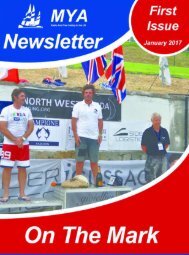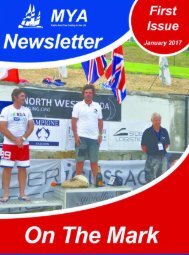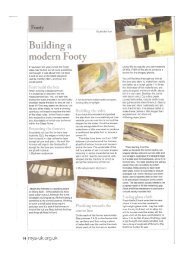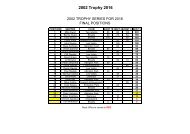You also want an ePaper? Increase the reach of your titles
YUMPU automatically turns print PDFs into web optimized ePapers that Google loves.
2. Stations and waterlines<br />
Station profiles for stations 15 - 20<br />
First, each station and waterline was drawn separately to<br />
ensure a smooth line. Next they were drawn together, as<br />
per the finished product of a naval architect, to make sure<br />
that they were correctly separated, one from the other.<br />
A table of offsets was prepared from these drawings<br />
D. Calculation of the ballast<br />
I wanted MS II to float on the same lines as Michel Selig. In<br />
fact, this was necessary for MS II to conform to the Rule.<br />
Henry Farley said that the only way to determine the weight and<br />
position of the lead ballast would be through trial and error. He<br />
advised me to build the lower portion of the hull (the "plug")<br />
detached from the upper portion - and also to build several<br />
copies of it for the trial and error process. The plug would be<br />
connected to the upper portion of the hull by two lengths of<br />
threaded s<strong>toc</strong>k which would also connect the ballast keel to the<br />
hull.<br />
In fact, the plug didn't run fully aft. I fabricated a fixed<br />
sternpost for the after portion. This would permit me to build<br />
the rudder and its radio control independently of the task of<br />
fabricating the plug..<br />
E. Wood







